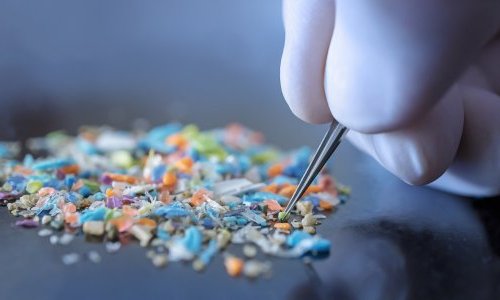
The ISO 16128 standard provides harmonised definitions for natural and organic cosmetic products and their ingredients. Photo: © Best Photo Studio / shutterstock.com
Like all ISO standards, the aim was to reach consensus among the various stakeholders to best meet expectations of brands and consumers. The standard attempts to establish common definitions and calculation bases, internationally recognized, to determine the minimum level of organic and natural ingredients required in the composition of cosmetics with such claims.
The result of a compromise, the standard was criticized by historic labels who disagreed on several points.
Through the voice of its Director Valérie Lemaire, the Ecocert Greenlife Group - the world’s leading certifying body of natural and organic cosmetics, based chiefly on the specifications of the European label COSMOS - disagrees on three points: the definition of natural ingredients, and the minimum percentage calculation required for organic ingredients and natural ingredients.
"It’s a standard of calculation and to make these calculations, definitions were necessary, but we don’t agree on these definitions," explains firstly Valérie Lemaire.
For Anne Dux, Director of Scientific and Regulatory Affairs at FEBEA, the French trade association representing the cosmetics industry, "the ISO 16128 standard represents an international consensus, which cannot limit itself to the position of various European private labels". For the industry, the standard has the advantage of offering an international standard serving as a global reference without however replacing national or regional specifications of various labels.
The first point of disagreement concerns the definition of natural ingredients, which specifies that according to the specifications of the COSMOS label, a natural ingredient cannot be qualified as such from the moment it originates from a plant that has undergone genetic transformation.
On this point, the ISO 16128 standard specifies that "GMOs are only allowed in the regions of the world that authorize them". In theory, they should not be allowed in the European Union. However, according to Valérie Lemaire, it is commonplace that ingredient manufacturers in France or Europe supply themselves with plants originating from areas of the world where GMOs are allowed. "Today, corn and soy are almost systematically sourced from the United States, and therefore are 100% GM, however ingredients originating from them will be described as natural," she adds. On the other hand, organic ingredients should not be concerned, since they cannot be certified organic in Europe if they come from a GM plant.
The second sticking point concerns the percentage calculation of ingredients of biological origin.
Anne Dux stresses on the fact that "the standard does not enable an industrialist to claim that his product is organic, but more to guarantee that it incorporates a certain percentage of organic ingredients." To this end, the standard provides for the calculation of the ratio of organic ingredients introduced at the beginning of the product’s manufacturing process.
This calculation at the beginning of the manufacturing process puzzles Valérie Lemaire. She considers that the mode of transformation of the product is not taken into account to validate the biological index. "A manufacturer can very well start with a certified organic ingredient and then add a solvent or petrochemical molecules. Once the formula is transformed, the biological molecule is completely modified and will be mixed. This ingredient, which however no longer respects the principles of organic farming, will be valued in a percentage of ingredients of biological origin," she says.
An issue that she also raises for the calculation of the natural origin as well as for the resulting claims. This is the third point of concern.
"Today any product on the market may claim having a percentage of natural origin, for example surfactants are plant derived, but during the transformation process, some far from green petrochemicals can come into play. It is therefore a wide open door for having claims on all products and for consumers to be completely misled," she explains.
"It’s impugning motives", answers Anne Dux who, on the contrary, sees in the standard an opportunity to simplify things for consumers often confronted to the diversity and contradiction of labels.
Does the solution lie in a better control of environmental claims, similar to what is done in France? This point, in contrast, seems to have reached consensus.




























